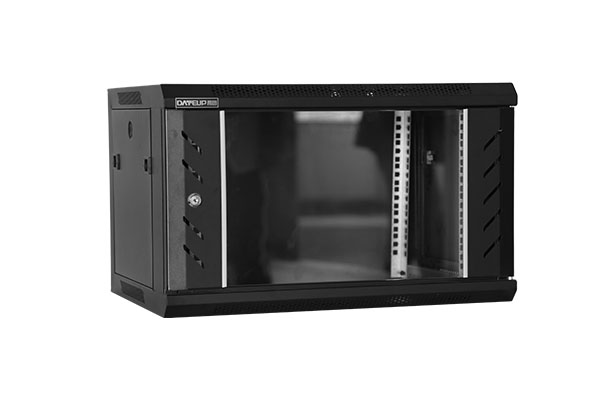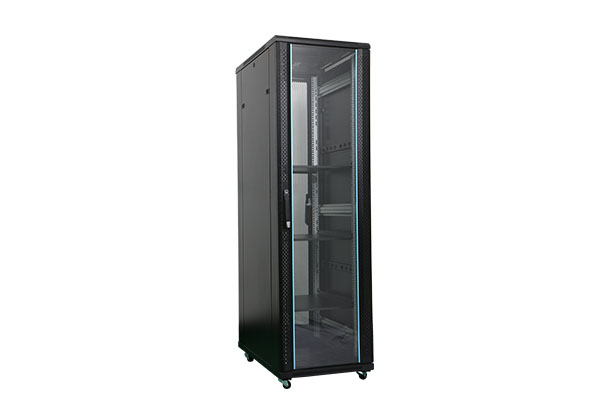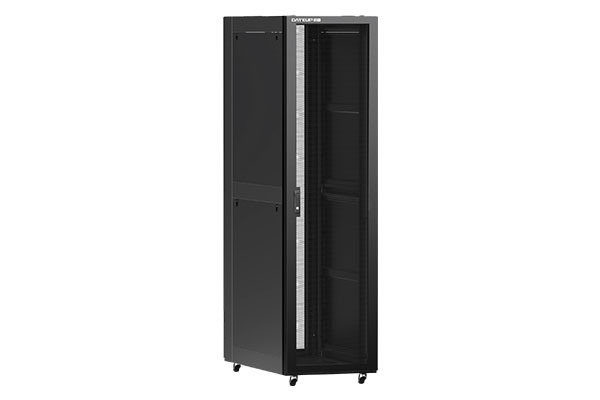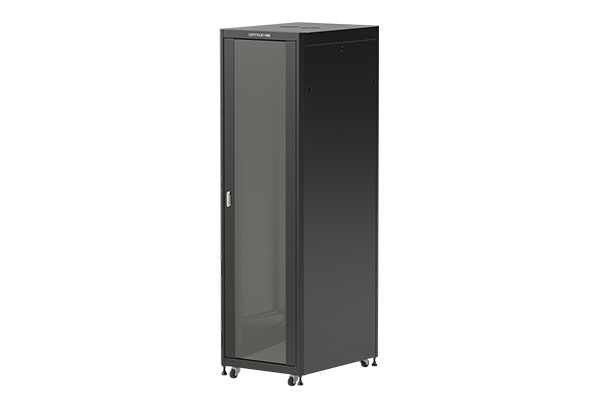How does MK Cabinet protect internal electronic equipment from interference?
Release Time : 2025-01-29
MK Cabinet plays a vital role in protecting internal electronic equipment from interference, especially in environments such as data centers, communication equipment rooms, or industrial control systems. This type of cabinet uses a variety of designs and functions to ensure that the internal electronic equipment can operate stably and is protected from electromagnetic interference, physical damage, and environmental factors.
1. Electromagnetic shielding design
Metal shell: MK Cabinet is usually made of high-quality metal materials (such as cold-rolled steel plates or stainless steel), and the metal shell can effectively shield external electromagnetic interference (EMI) and radio frequency interference (RFI). The conductive properties of metal materials can guide electromagnetic waves outside the cabinet to avoid interfering with internal equipment.
Electromagnetic shielding coating: Some high-end cabinets are coated with electromagnetic shielding coatings (such as conductive coatings or galvanized coatings) on the inside to further enhance the shielding effect. These coatings can absorb and reflect electromagnetic waves and reduce interference.
Seam treatment: The seams of the cabinet (such as door seams) are the main entrances for electromagnetic interference. By using conductive sealing strips, anti-electromagnetic interference gaskets, or anti-radiation tapes, the shielding effect at the seams can be ensured to prevent electromagnetic waves from penetrating.
2. Grounding design
Grounding system: MK Cabinet is usually equipped with a special grounding system to ensure that the metal parts of the cabinet housing and internal equipment are reliably grounded. Good grounding can quickly conduct away the induced current or static electricity to prevent the equipment from being interfered with or damaged.
Conductive bolts and connectors: The mounting bolts and connectors of the cabinet are made of conductive materials to ensure a good connection between the cabinet housing and the grounding system, further enhancing the anti-interference ability.
3. Heat dissipation and temperature control
Ventilation design: The cabinet is usually equipped with efficient front and rear vents or ventilation slots to ensure that the heat of the internal electronic equipment can be dissipated in time. Reasonable ventilation design can avoid overheating of the equipment and prevent unstable operation caused by temperature fluctuations.
Fan and thermal management system: Some cabinets have built-in fans or thermal management systems that can automatically adjust the air volume according to the temperature to ensure that the equipment operates within a safe temperature range.
Dust filtration: The ventilation holes are usually equipped with dust filters to prevent dust from entering the cabinet and affecting the heat dissipation and performance of the equipment.
4. Physical protection
Protective doors: MK Cabinet is usually equipped with locks and protective doors to prevent unauthorized personnel from accessing internal equipment. The design of the protective door ensures that the electromagnetic shielding effect will not be affected during the switching process.
Anti-seismic design: The bottom and bracket of the cabinet are usually designed to be anti-seismic to ensure that the internal equipment will not loosen or be damaged under slight vibration or external impact.
Anti-tilt fixation: The cabinet is firmly fixed to the wall through wall fixing devices (such as expansion bolts or anti-seismic brackets) to prevent tilting or falling off due to external forces.
5. Lightning protection and overvoltage protection
Surge protector: A surge protector (SPD) can be installed inside the cabinet to prevent lightning strikes or other transient overvoltages from damaging internal equipment. Surge protectors can absorb overvoltage and protect the circuit safety of the equipment.
Power filter: A power filter can be installed at the power input end of the cabinet to filter out high-frequency noise and interference in the power supply to ensure clean power for the equipment.
6. Cable management
Cable channel: A special cable channel is designed inside the cabinet to ensure that the power cord and data cable are arranged in an orderly manner to avoid cable crossing and confusion. Good cable management can reduce the occurrence of electromagnetic interference.
Shielded cables: When connecting devices inside the cabinet, shielded cables (such as shielded twisted pair or coaxial cable) are preferred. Shielded cables can effectively resist external electromagnetic interference.
Cable fixing device: The cabinet is equipped with cable fixing clips or straps to ensure that the cables will not loosen due to vibration or movement, affecting the normal operation of the equipment.
7. Environmental protection
Anti-corrosion coating: The cabinet shell is usually coated with anti-corrosion coating (such as epoxy resin coating or powder coating) to prevent damage to the metal shell due to humid or corrosive environment.
Temperature and humidity monitoring: Some high-end cabinets are equipped with temperature and humidity sensors and monitoring systems to monitor the environmental parameters inside the cabinet in real time, and issue alarms or automatically adjust the cooling system in abnormal situations.
8. Modularity and flexibility
Adjustable internal structure: MK Cabinet is usually designed with an adjustable internal structure (such as a movable mounting rail or tray), which allows users to flexibly adjust the layout according to the size and needs of the equipment.
Expansion function: The cabinet has reserved expansion interfaces, and users can add additional protection devices (such as more surge protectors or power modules) as needed to further enhance the protection capabilities.
MK Cabinet effectively protects internal electronic equipment from electromagnetic interference, physical damage and environmental factors through electromagnetic shielding, grounding system, heat dissipation design, physical protection, lightning protection measures, cable management and environmental protection. This comprehensive protection measure not only ensures the stable operation of the equipment, but also improves the reliability and safety of the system, meeting the needs of modern electronic equipment for high anti-interference capabilities.
1. Electromagnetic shielding design
Metal shell: MK Cabinet is usually made of high-quality metal materials (such as cold-rolled steel plates or stainless steel), and the metal shell can effectively shield external electromagnetic interference (EMI) and radio frequency interference (RFI). The conductive properties of metal materials can guide electromagnetic waves outside the cabinet to avoid interfering with internal equipment.
Electromagnetic shielding coating: Some high-end cabinets are coated with electromagnetic shielding coatings (such as conductive coatings or galvanized coatings) on the inside to further enhance the shielding effect. These coatings can absorb and reflect electromagnetic waves and reduce interference.
Seam treatment: The seams of the cabinet (such as door seams) are the main entrances for electromagnetic interference. By using conductive sealing strips, anti-electromagnetic interference gaskets, or anti-radiation tapes, the shielding effect at the seams can be ensured to prevent electromagnetic waves from penetrating.
2. Grounding design
Grounding system: MK Cabinet is usually equipped with a special grounding system to ensure that the metal parts of the cabinet housing and internal equipment are reliably grounded. Good grounding can quickly conduct away the induced current or static electricity to prevent the equipment from being interfered with or damaged.
Conductive bolts and connectors: The mounting bolts and connectors of the cabinet are made of conductive materials to ensure a good connection between the cabinet housing and the grounding system, further enhancing the anti-interference ability.
3. Heat dissipation and temperature control
Ventilation design: The cabinet is usually equipped with efficient front and rear vents or ventilation slots to ensure that the heat of the internal electronic equipment can be dissipated in time. Reasonable ventilation design can avoid overheating of the equipment and prevent unstable operation caused by temperature fluctuations.
Fan and thermal management system: Some cabinets have built-in fans or thermal management systems that can automatically adjust the air volume according to the temperature to ensure that the equipment operates within a safe temperature range.
Dust filtration: The ventilation holes are usually equipped with dust filters to prevent dust from entering the cabinet and affecting the heat dissipation and performance of the equipment.
4. Physical protection
Protective doors: MK Cabinet is usually equipped with locks and protective doors to prevent unauthorized personnel from accessing internal equipment. The design of the protective door ensures that the electromagnetic shielding effect will not be affected during the switching process.
Anti-seismic design: The bottom and bracket of the cabinet are usually designed to be anti-seismic to ensure that the internal equipment will not loosen or be damaged under slight vibration or external impact.
Anti-tilt fixation: The cabinet is firmly fixed to the wall through wall fixing devices (such as expansion bolts or anti-seismic brackets) to prevent tilting or falling off due to external forces.
5. Lightning protection and overvoltage protection
Surge protector: A surge protector (SPD) can be installed inside the cabinet to prevent lightning strikes or other transient overvoltages from damaging internal equipment. Surge protectors can absorb overvoltage and protect the circuit safety of the equipment.
Power filter: A power filter can be installed at the power input end of the cabinet to filter out high-frequency noise and interference in the power supply to ensure clean power for the equipment.
6. Cable management
Cable channel: A special cable channel is designed inside the cabinet to ensure that the power cord and data cable are arranged in an orderly manner to avoid cable crossing and confusion. Good cable management can reduce the occurrence of electromagnetic interference.
Shielded cables: When connecting devices inside the cabinet, shielded cables (such as shielded twisted pair or coaxial cable) are preferred. Shielded cables can effectively resist external electromagnetic interference.
Cable fixing device: The cabinet is equipped with cable fixing clips or straps to ensure that the cables will not loosen due to vibration or movement, affecting the normal operation of the equipment.
7. Environmental protection
Anti-corrosion coating: The cabinet shell is usually coated with anti-corrosion coating (such as epoxy resin coating or powder coating) to prevent damage to the metal shell due to humid or corrosive environment.
Temperature and humidity monitoring: Some high-end cabinets are equipped with temperature and humidity sensors and monitoring systems to monitor the environmental parameters inside the cabinet in real time, and issue alarms or automatically adjust the cooling system in abnormal situations.
8. Modularity and flexibility
Adjustable internal structure: MK Cabinet is usually designed with an adjustable internal structure (such as a movable mounting rail or tray), which allows users to flexibly adjust the layout according to the size and needs of the equipment.
Expansion function: The cabinet has reserved expansion interfaces, and users can add additional protection devices (such as more surge protectors or power modules) as needed to further enhance the protection capabilities.
MK Cabinet effectively protects internal electronic equipment from electromagnetic interference, physical damage and environmental factors through electromagnetic shielding, grounding system, heat dissipation design, physical protection, lightning protection measures, cable management and environmental protection. This comprehensive protection measure not only ensures the stable operation of the equipment, but also improves the reliability and safety of the system, meeting the needs of modern electronic equipment for high anti-interference capabilities.







